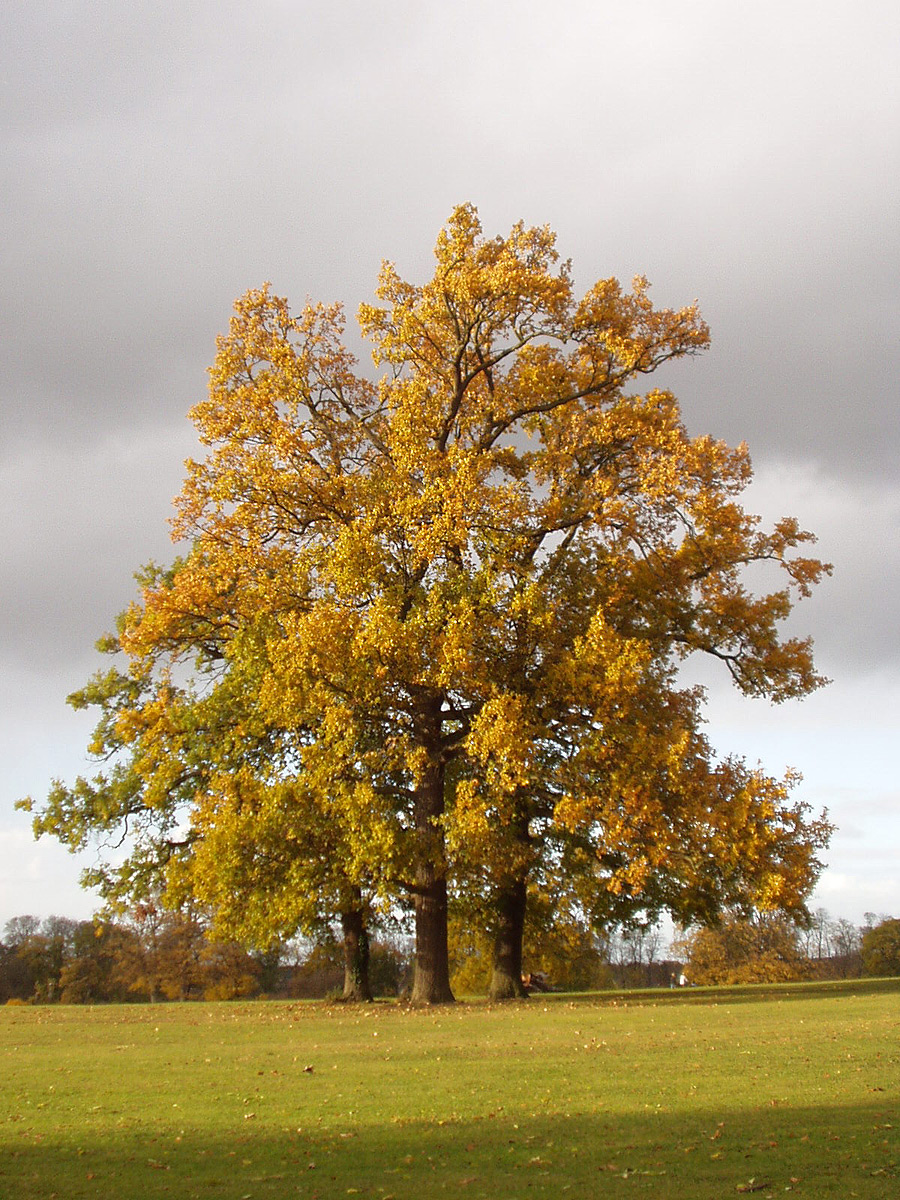Carbon Offsetting - Tree Planting
Carbon Offsetting by Planting Trees - Is it a realistic Proposition?
How many trees would we have to plant to offset global warming?

Planting trees won't solve global
warming but it's always worth doing as these 60ft oaks prove
Global warming is being caused by greenhouse gases, notably carbon dioxide in the atmosphere acting as an insulating blanket around the world and so keeping in heat from the sun, rather than it reflecting back into outer space again.
Much of this carbon dioxide has been released in the last 150 years from "carbon-sinks" in the form of the fossil fuels gas, oil and coal reserves where ancient atmospheric carbon dioxide was trapped and sequestered millions of years ago. Burning the fossil fuels combines the carbon they contain with atmospheric oxygen to produce carbon dioxide.
Recently tree-planting schemes have been touted as way to become "carbon-neutral". In other words, if you emit carbon dioxide from a flight you went on, by driving your car or just by being a 21st century citizen, you can neutralize that amount by planting trees (or rather by having trees planted on your behalf for a fee) that will absorb the same quantity of carbon dioxide that you caused to be produced.
So I thought "I wonder how realistic this could be" - time to get the calculator and do some sums.
Estimates for the amount of carbon dioxide emitted from "anthropogenic sources" (sources due to man's activities) - this is mainly from fossil fuel burning - are around 22 billion tons per annum.
The amount of carbon dioxide taken up and held by forest in biomass of the trees is variable, but a figure of 120 tonnes of carbon per hectare has been taken for the basis of the following calculations. This is in line with the range of similar values for a number of species of forest trees and of Brazilian forests.
120 tonnes of carbon per hectare corresponds to 440 tonnes of carbon dioxide equivalent per hectare of mature forest trees.
Carbon - atomic mass = 12
Carbon dioxide - CO
So a mature forest can soak up the equivalent of 440 tonnes of atmospheric carbon dioxide per hectare in the 50-100 years it takes to reach maturity - that's a one-off total - not per year and may take several decades to get there.
In order to deal with currently generated carbon dioxide, an area of forest equivalent to:
22 billion tonnes divided by 440 tonnes per hectare - is needed
=50 Million hectares per annum or 500 000 square kilometres per annum
...to be planted with forest and held in perpetuity (not cut down or allowed to revert back to atmospheric carbon dioxide).
This is approximately equivalent to the entire land area of Spain, twice as big as the United Kingdom and bigger than any US state other than Texas (696,621 sq km.) or Alaska (1,717,854 sq. km.) To be forested anew each year and held as such forever.
Therefore planting trees alone other than on a colossal scale is not going to even allow us to stand still - let alone start to reverse the effects of global warming.
What are the other problems with tree-planting schemes?
Tree planting is impermanent. To be effective, the trees would have to be maintained as a standing crop forever - this is impossible to guarantee.
Schemes are often operated in Third World countries. There is little wrong with this intrinsically and potentially much good to be gained from it, however:
Due to a lack of effective government and regulatory infrastructure, the schemes can be very inappropriate for a particular area.
Some tree-planting offset companies have been accused of charging to plant trees that would have been planted anyhow.
Research from America suggests that planting trees in Northern areas can actually contribute to climate change by the trees absorbing the sun's heat instead of it being reflected back.
Schemes may cause social disruption.
Monocultures of trees can be planted - just one single species over a large area which reduces biodiversity and hence environmental stability.
This single species may not even be a native tree, resulting in a "green desert" with few or no other animal or plant species being able to live in the planted area.
So what do I do? Ignore tree planting schemes?
There are many environmental benefits from planting trees beyond absorbing carbon dioxide. The problems can arise when trees are planted in order to absorb carbon dioxide.
There are moves to establish a "Gold Standard", "Code of Best Practice" or accreditation scheme for all offsetting schemes and to regulate the industry.
See also Tufts Climate Initiative report
